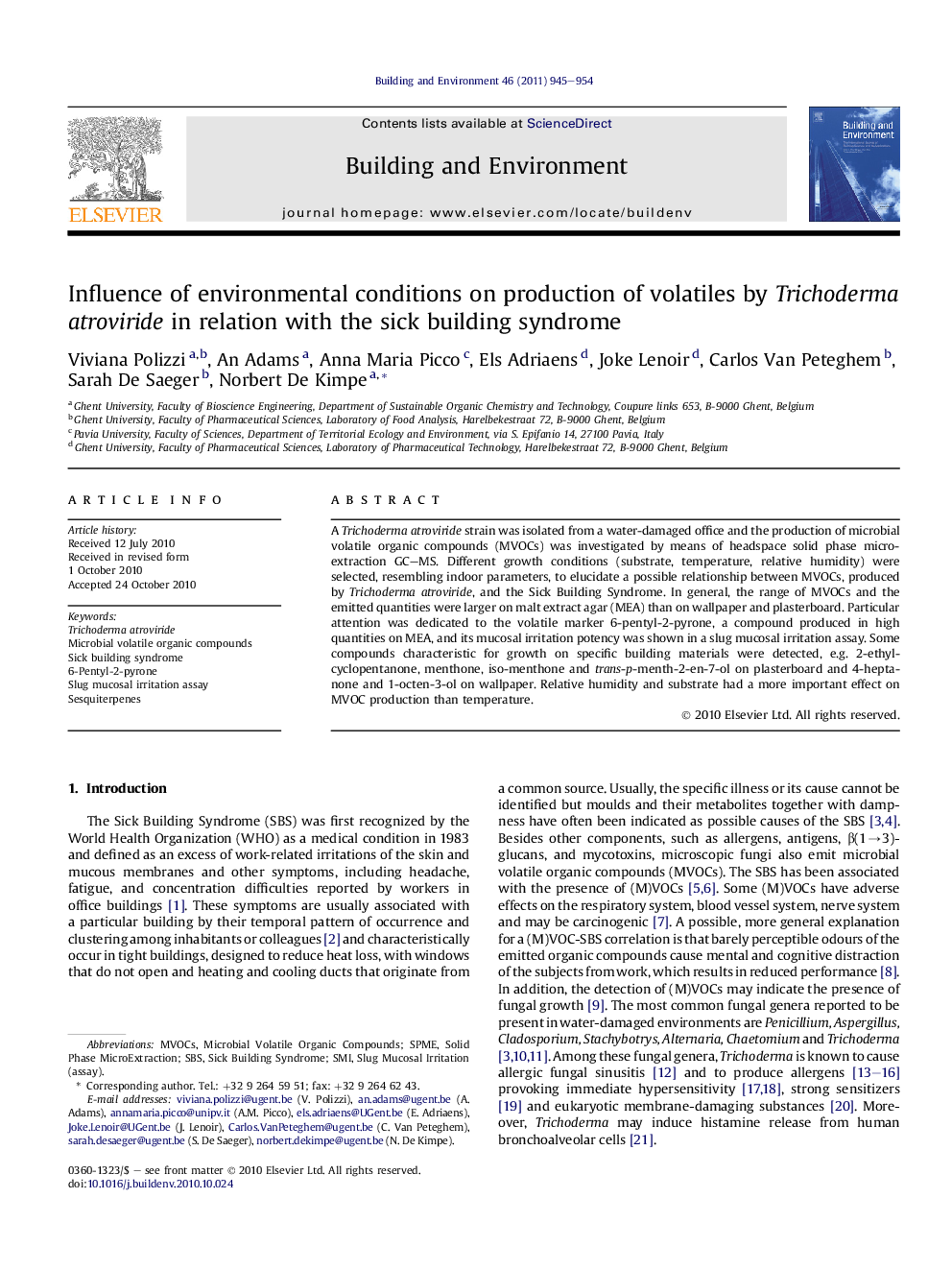| Article ID | Journal | Published Year | Pages | File Type |
|---|---|---|---|---|
| 248853 | Building and Environment | 2011 | 10 Pages |
A Trichoderma atroviride strain was isolated from a water-damaged office and the production of microbial volatile organic compounds (MVOCs) was investigated by means of headspace solid phase microextraction GC–MS. Different growth conditions (substrate, temperature, relative humidity) were selected, resembling indoor parameters, to elucidate a possible relationship between MVOCs, produced by Trichoderma atroviride, and the Sick Building Syndrome. In general, the range of MVOCs and the emitted quantities were larger on malt extract agar (MEA) than on wallpaper and plasterboard. Particular attention was dedicated to the volatile marker 6-pentyl-2-pyrone, a compound produced in high quantities on MEA, and its mucosal irritation potency was shown in a slug mucosal irritation assay. Some compounds characteristic for growth on specific building materials were detected, e.g. 2-ethylcyclopentanone, menthone, iso-menthone and trans-p-menth-2-en-7-ol on plasterboard and 4-heptanone and 1-octen-3-ol on wallpaper. Relative humidity and substrate had a more important effect on MVOC production than temperature.
